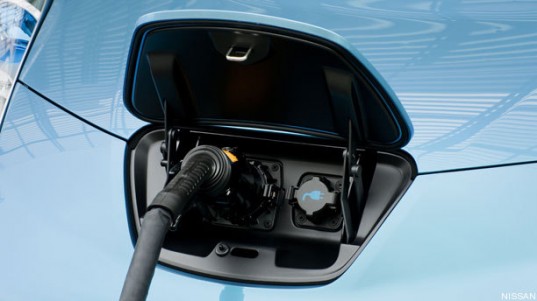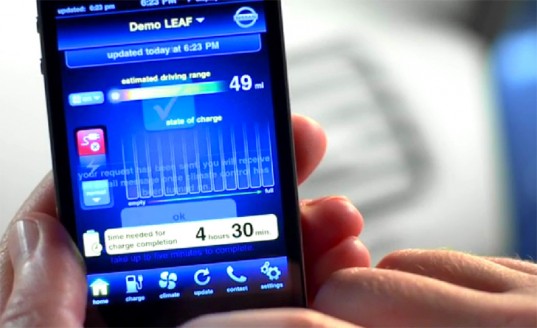A twist on conventional charging for electric cars, Nissan has developed a system that allows a vehicle to supply electricity to power a house.
A prototype of the charging system running on a Nissan Leaf electric car was unveiled in Japan on Tuesday. The system can be used to supply electricity to a house during a power outage or shortage. A two-way charging device that would typically convert the household electricity supply to a voltage suitable for charging the car’s battery can be reversed to feed power back into the household circuit.
The lithium ion batteries in a Leaf can story up to 24kWh (kilowatt hours) of electricity, which Nissan estimates is sufficient to power an average Japanese home for about two days. That means if the system was used for a few hours during the day, the car would still retain enough power to make trips.

If the system is used regularly, it could also help cut energy bills. By charging the car overnight, when power demand is low and electricity is cheaper, the stored energy in the battery can be released in the daytime when electricity costs are higher.
Some companies already offer dedicated lithium ion storage batteries for just this purpose. Nissan’s system accomplishes the same goal with the batteries already fitted in the car, which would be an advantage for owners of electric cars.
Nissan plans to commercialize the system sometime before April 2012, said Shiro Nagai [cq], a spokesman for Nissan in Yokohama. Models for the overseas market will likely follow but will first have to be designed for local electricity supply systems, he said.

The company did not announce pricing details.
Nissan is announcing the system as energy saving measures are at the forefront of Japanese minds. Power outages and shortages were rare in Japan until this year. The accidents in March at the Fukushima Daichi nuclear power plant left a dent in Tokyo Electric Power’s generation capability that has been subsequently compounded by additional reactors being taken offline for safety checks.
The Tokyo area suffered a series of blackouts in March, soon after the earthquake and tsunami that hit the region, and more are possible. The potential shortfall in electricity supply has put the country on a power-saving mission.
Car companies like Nissan have shifted to a Saturday to Wednesday work week while other companies have adjusted work patterns. Lights have been dimmed across the country, escalators are switched off at railway stations and households are being urged to keep air conditioners off during the daytime.
The power saving measures are having a real effect.
On Tuesday, as Nissan was announcing the new system, electricity demand in Tokyo was hovering around 37 billion watts, well below TEPCO’s peak generating capacity for the day of 50 billion watts. Last year on the same day the Tokyo region was consuming over 55 billion watts at peak time.
Source: ITWorld
 Follow
Follow